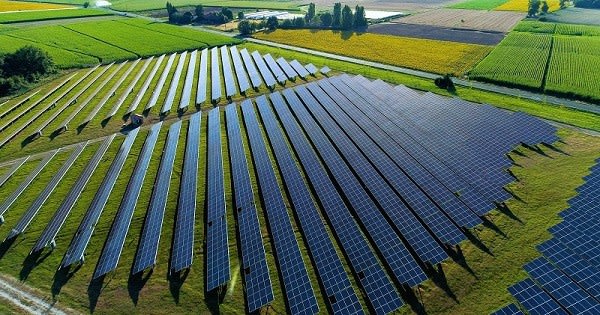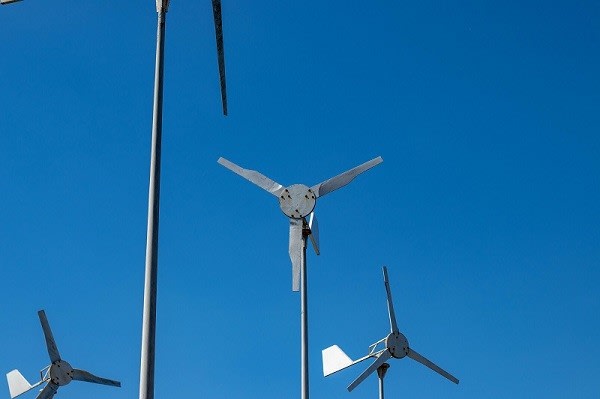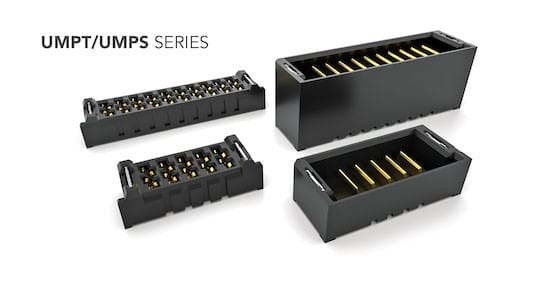Making PCB Power Possible
Follow articleHow do you feel about this article? Help us to provide better content for you.
Thank you! Your feedback has been received.
There was a problem submitting your feedback, please try again later.
What do you think of this article?
The world of electronics is facing two competing requirements. Customers are demanding products that offer more functionality, whilst at the same time wanting their devices to be smaller and more compact. These competing requirements are forcing connector manufacturers to look again at how power is handled.
Solar energy - the crop for the future?
The management of power used to be just a mechanical (or electro-mechanical) task. However, the latest applications across industry require clean and consistent power. At the same time, these applications call for power conditioning that means that the worlds of signal and power connectors are now merging. Getting power to the printed circuit board is now a major challenge.
Renewable Energy
Renewable energy has been a growth sector for some time now. In many parts of the world, it is possible to find fields given over to a new type of harvest – solar energy. It is now common to see row upon row of photovoltaic panels in place of corn or wheat. The power collected by these panels is destined for the distribution network, but in order to be the power must be monitored and regulated to ensure the quality of the supply. All of these solar farms need complex electronics to control the output, and this means that power must be processed on the PCB.
On a smaller scale, the rising trend of microgeneration needs similar technology. Where previously power generation was a massive industry, modern technology has enabled local power generation to be possible in the shape of wind, gas, and solar installations. Instead of the massive infrastructure that depends on economies of scale, more efficient hardware can counter the rising cost of traditional energy to make microgeneration a truly viable alternative.
Microgeneration in action
Homes and businesses can turn to a small installation to provide a backup, or even a primary, power source. Local generation of power even allows the opportunity to sell energy back to the conventional network. This flow needs to be of a consistent quality to ensure the safety of equipment, and so controlling and monitoring the flow of power is vital. The equipment needed to achieve this must be capable of handling large loads but also cost-effective enough to provide real economic advantages.
Electric Vehicles
The rising environmental costs of traditionally powered cars using gas and oil means that there is a growing desire to find alternatives. Electric vehicles are not new, but the latest generation of cars are far more capable than anything that has gone before. They require power transmission on a completely different scale to that of more traditional electronics, and connectors for electric vehicle applications must be large and built with safety in mind. But the need for greater capability within the automotive industry is not limited to the electric vehicle market. Even conventional vehicles are embracing alternative drive-train technologies, and the need for connectors that are capable of greater power on the PCB is growing.
The latest trends in electric vehicles
Image: Arrival
The innovations in the automotive industry are not just limited to the power source. Modern vehicles no longer use direct mechanical systems to control the onboard machinery. “Fly-by-wire” systems that were previously used in military aviation are becoming more common. These systems convert the driver's inputs into electronic signals that control everything from steering to safety.
These sophisticated systems are growing more complex with each generation of vehicles, and the need to handle more power on the PCB grows too.
Traditional power connectors are bulky, with large contacts spaced widely apart. This type of connector is not compatible with the modern PCB-controlled power systems that exist in these, and many other, applications.
To create a connector that is both high power and high density has taken some innovative thinking, and manufacturers like Samtec are at the leading edge of power connector design.
Power for Board-to-Board Applications
The use of PCBs in power applications means that power connectors must share space with more traditional signal connectors. Designing an efficient system sometimes means several PCBs being connected or stacked together.
Samtec’s UMP family of sockets (187-2170) and headers (187-2166) for board-to-board power delivery are designed to work alongside the company's existing range of high-speed mezzanine connectors. Available in a range of board stacking heights, these components feature a blade-type contact design that offers a large mating surface area for increased current carrying capacity. The contacts can deliver over 17A per circuit, but have a pitch of just 2mm, giving a high-power density. The UMP family is designed to provide the same mating heights as existing Samtec signal connectors such as the ERM5 headers (159-3130) and ERF5 sockets (159-3103) , which allows the engineer to create a compact, high-density connector system that can make the most efficient use of space on the board.
Power to the PCB!
It is clear that moving forwards electronic systems will continue to shrink, whilst at the same time, the demands being placed upon them will escalate. Samtec will continue to introduce new and innovative solutions to the problems of delivering power to the PCB. Take a look at the Samtec range on RS today.





